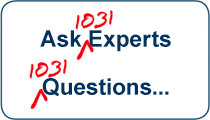Compose tips
- No HTML tags allowed.
- Web page addresses and e-mail addresses turn into links automatically.
- Lines and paragraphs are automatically recognized. The <br /> line break, <p> paragraph and </p> close paragraph tags are inserted automatically. If paragraphs are not recognized simply add a couple blank lines.
Allowed HTML tags: <a> <em> <strong> <p> <br>
This site allows HTML content. While learning all of HTML may feel intimidating, learning how to use a very small number of the most basic HTML "tags" is very easy. This table provides examples for each tag that is enabled on this site.
For more information see W3C's HTML Specifications or use your favorite search engine to find other sites that explain HTML.
Tag Description You Type You Get Anchors are used to make links to other pages. <a href="https://www.expert1031.com">1031 Experts</a>1031 Experts Emphasized <em>Emphasized</em>Emphasized Strong <strong>Strong</strong>Strong By default paragraph tags are automatically added, so use this tag to add additional ones. <p>Paragraph one.</p> <p>Paragraph two.</p>Paragraph one.
Paragraph two.
By default line break tags are automatically added, so use this tag to add additional ones. Use of this tag is different because it is not used with an open/close pair like all the others. Use the extra " /" inside the tag to maintain XHTML 1.0 compatibility Text with <br />line breakText with
line breakMost unusual characters can be directly entered without any problems.
If you do encounter problems, try using HTML character entities. A common example looks like & for an ampersand & character. For a full list of entities see HTML's entities page. Some of the available characters include:
Character Description You Type You Get Ampersand && Greater than >> Less than << Quotation mark ""





It Doesn’t End at 15%
Multi-Ownership issues in 1031 exchanges?
1031 Exchanges Targeted for more audits by IRS and states